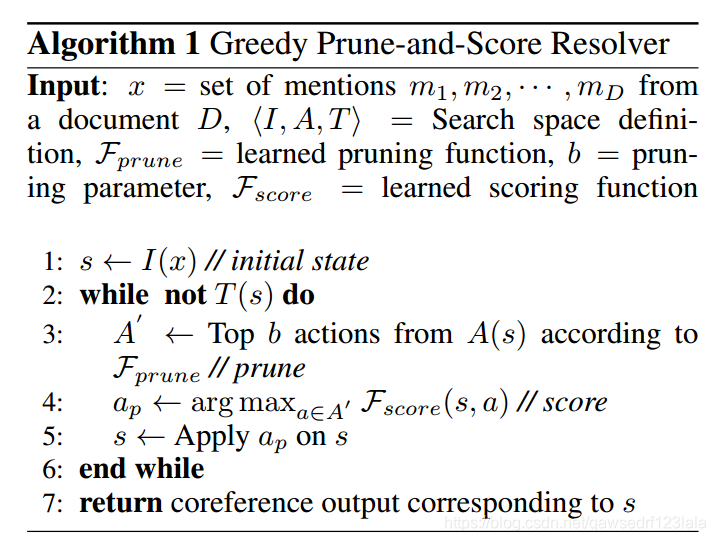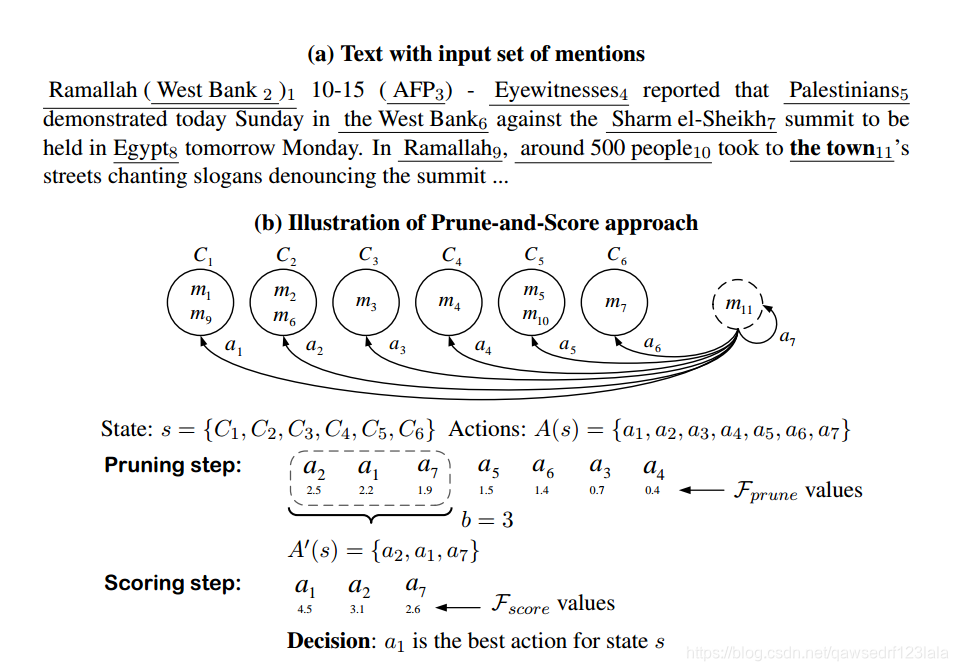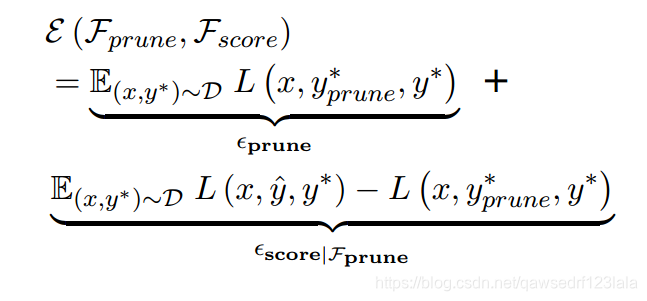Prune-and-score:learning for greedy coreference resolution
本文是受HC-search算法的启发而得,HC-Search是一种分而治之的解决方案,可以学习具有预定义角色的多个组件,并且每个组件都可以通过简化其他组件的角色来实现总体目标。本论文的一个核心内容就是学习两个function(scoring function 和 pruning function);来解决评分的不可实现性的问题。作者又提到其核心思想和coarse-to-fine架构差不多。
作者的贡献
主要是三点:
- 提出了prune-and-score的思想
- 把总的loss分解为两个:pruning loss 和 scoring loss
- 领域最好
problem setup
CR问题就是一个分类问题,输入x,抽取m(mention),最后输出Ck(所有的指向同一个实体的mention的聚类),总的loss可以由L(x, y’, y)来表示, 其中x-输入, y’-模型的输出, y-真正的输出
在本问题中,我们的框架是以搜索为基础, 包括三个关键组件:
- search space Sp : Sp是一个三元组<I, A, T>,其中,I是初始化的状态方程, A是可能的动作, T是预测值(True or False)
- Action pruning function
- Action scoring function
本文使用的搜索方法是 ** 贪婪搜索 **
Greedy Prune-and score Approach
流程:

The search starts at the initial state s0 = I(x) (see Algorithm 1). At each non-terminal state s, the pruning function Fprune
retains only the top b actions (A0) from A(s) (Step 3), and the scoring function Fscore picks the best scoring action ap 2 A0 (Step 4) to reach the next state. When a terminal state is reached its contents are returned as the prediction.
具体的一个例子

Learning Algorithms
总的loss可以由下面的公式表示:








 本文受HC - search算法启发,核心是学习评分和剪枝两个函数解决评分不可实现问题。作者提出prune - and - score思想,将总损失分解为剪枝损失和评分损失。CR问题是分类问题,框架以搜索为基础,采用贪婪搜索方法,还给出了总损失公式。
本文受HC - search算法启发,核心是学习评分和剪枝两个函数解决评分不可实现问题。作者提出prune - and - score思想,将总损失分解为剪枝损失和评分损失。CR问题是分类问题,框架以搜索为基础,采用贪婪搜索方法,还给出了总损失公式。

















 被折叠的 条评论
为什么被折叠?
被折叠的 条评论
为什么被折叠?








